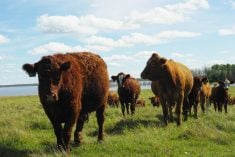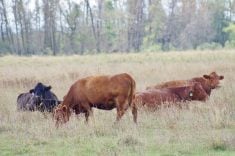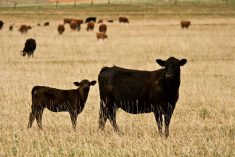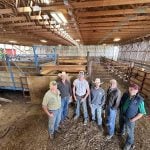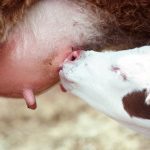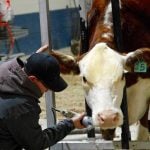For the week ending March 2, Western Canadian feeder cattle prices were $3/cwt to $6/cwt higher on average compared to seven days earlier.
Backgrounded cattle over 800 pounds were relatively unchanged. Strength was noted in the 600-800 pound weight categories which were up a solid $5/cwt from the previous week. Calves under 600 pounds were extremely variable with quoted values unchanged to as much as $15/cwt on quality genetic packages.
Feedlot operators were anxious to secure replacements for the summer timeframe, which caused surge in the mid and lower weight categories. Ontario buying interest was exceptional last week contributing the variation on calves.
Read Also

U.S. grains: Soy hits four-month high on hopes for China trade deal
U.S. soybean futures jumped to their highest level in more than four months on Monday on hopes that China will resume buying American supplies after President Donald Trump said the countries were set to reach a trade deal during his trip to Asia this week.
The major grazing regions of Western Canada have received over 200 per cent of normal precipitation over the past 30 days. Grassers were red hot. Demand has also increased for herd building heifers which has diminished supplies for finishing feedlots.
In Central Alberta, medium to larger frame, light flesh, mixed heifers averaging 875 pounds on silage and straw diet (no grain) with full processing data sold for $291. Southeast of Calgary, minimal butter, larger frame mixed blend Limousin steers on light grain and silage diet on the doorstep at 860 pounds were valued at $335. West of Saskatoon, Angus based heifers carrying medium flesh around 805 pounds supposedly sold for $310. Northwest of Winnipeg, Charolais based steers on light grain and silage diet with weight of 845 pounds apparently traded for $336.
Southeast of Saskatoon, Simmental based steers on forage and light grain diet averaging a shade over 700 pounds were last bid at $372. South of Edmonton, mixed heifers weighing 700 pounds on light grain and silage diet with full health records reportedly sold for $330.
North of Brandon, larger frame, thin, Charolais steers about 650 pounds were last bid at $410. In Central Saskatchewan, medium to larger frame black steers with heavier coats on the card at 625 pounds apparently traded for $430. Near Lethbridge, tan heifers weighing 625 pounds supposedly traded for $360. North of Calgary, Angus based steers well weaned over 70 days averaging 500 pounds with full processing data sold for $478. West of Edmonton, 90 day weaned Angus heifers on hay diet with full processing history, reportedly set the bar at $360.
The USDA estimated cattle outside finishing feedlots as of January 1, 2024, at 24.2 million head, down 1.1 million from January 1, 2023 and down 400,000 head from January 1, 2015. This gave the Canadian feeder market a boost late in the week.
— Jerry Klassen is president and founder of Resilient Capital, specializing in proprietary commodity futures trading and market analysis. Jerry consults with feedlots on risk management and writes a weekly cattle market commentary. He can be reached at 204-504-8339 or via his website at ResilCapital.com.





